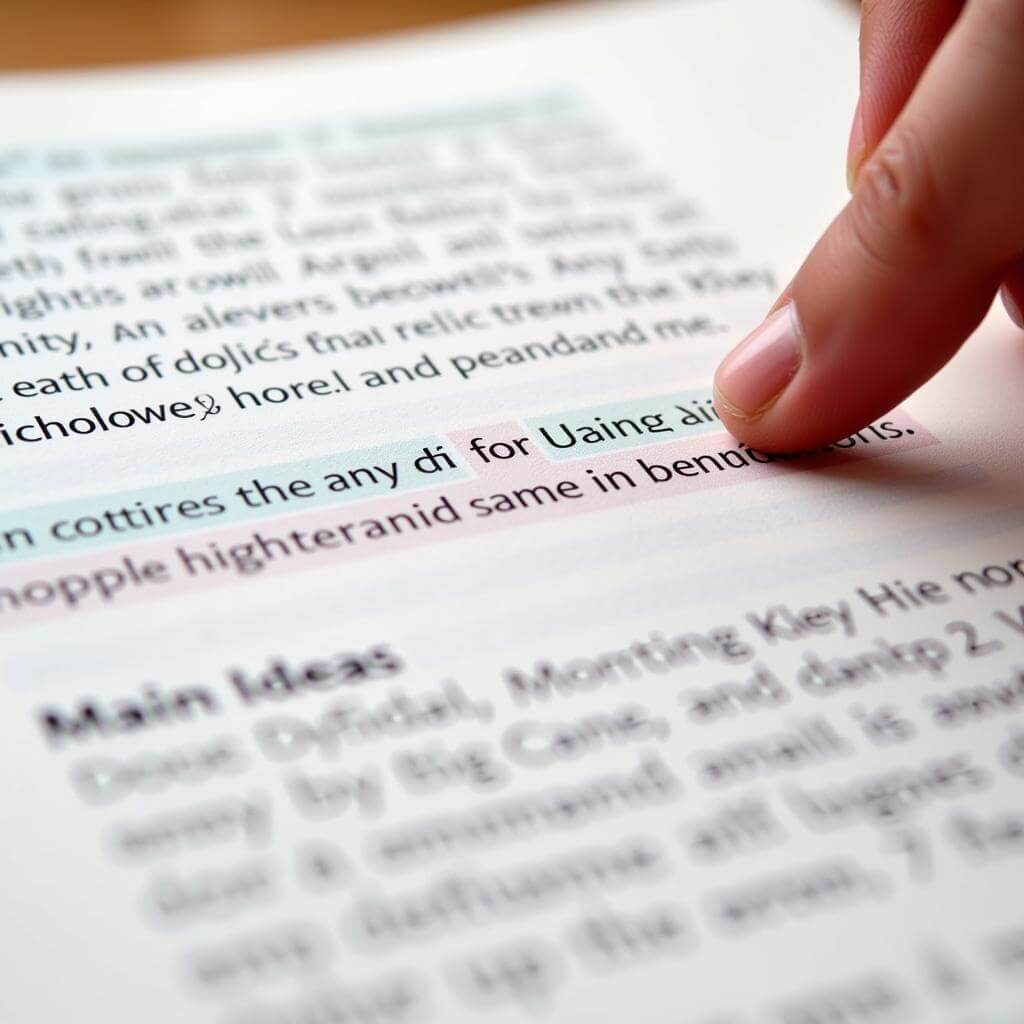Are you struggling with IELTS Reading fill-in-the-gaps questions? You’re not alone. Many test-takers find this question type challenging, but with the right approach, you can boost your performance and confidence. In this comprehensive guide, we’ll explore effective strategies to tackle these tricky questions and help you achieve your desired IELTS score.
Understanding IELTS Reading Fill-in-the-Gaps Questions
Before diving into strategies, it’s crucial to understand what fill-in-the-gaps questions entail. These questions require you to complete sentences or summaries by selecting words from the passage or a given list. They test your ability to comprehend specific details and grasp the overall context of the text.
Types of Fill-in-the-Gaps Questions
- Sentence completion
- Summary completion
- Notes completion
- Table completion
- Flow-chart completion
Each type presents unique challenges, but the core strategies remain consistent across all variations.
Key Strategies for Tackling Fill-in-the-Gaps Questions
1. Skim the text first
Before attempting to answer any questions, quickly skim the entire passage to get a general idea of its content and structure. This overview will help you locate information more efficiently when you start filling in the gaps.

2. Read the instructions carefully
Pay close attention to the word limit for each answer. Some questions may specify “NO MORE THAN TWO WORDS AND/OR A NUMBER.” Exceeding this limit will result in a wrong answer, even if the content is correct.
3. Analyze the context
Examine the words before and after the gap to understand the context. This will help you predict the type of word needed (e.g., noun, verb, adjective) and narrow down your options.
4. Look for synonyms and paraphrasing
IELTS often uses synonyms or paraphrases information from the passage. Be prepared to match ideas rather than exact words. This skill is crucial for identifying the correct answers in the text.
“In IELTS Reading, the ability to recognize synonyms and paraphrases is as important as understanding the text itself. It’s not just about finding the right words, but matching the right concepts.” – Dr. Emma Thompson, IELTS Expert with 15 years of experience
5. Use grammatical clues
Pay attention to grammatical structures surrounding the gap. These can provide valuable hints about the required word form or type. For example, if the gap follows “an,” you know you need a word starting with a vowel sound.
6. Practice active reading
As you read the passage, engage with the text actively. Ask yourself questions, make mental notes of key points, and try to anticipate what information might be needed for the gaps.
7. Use elimination strategy
If you’re given a list of words to choose from, use the process of elimination. Cross out words that don’t fit grammatically or contextually to narrow down your options.
8. Don’t leave any gaps empty
Even if you’re unsure, always provide an answer for every gap. There’s no penalty for guessing in IELTS, so it’s better to attempt an educated guess than to leave a blank space.
9. Manage your time effectively
Allocate your time wisely. Don’t spend too long on a single question. If you’re stuck, make your best guess and move on. You can always return to difficult questions if you have time at the end.
10. Double-check your answers
If time permits, review your answers. Ensure they make sense in context and adhere to the word limit specified in the instructions.
Common Pitfalls to Avoid
- Ignoring word limits
- Copying words incorrectly from the passage
- Failing to check grammar and spelling
- Overlooking context clues
- Getting fixated on unfamiliar vocabulary
By being aware of these common mistakes, you can take steps to avoid them and improve your performance.
Advanced Tips for High Scorers
For those aiming for band 8 or above, consider these advanced strategies:
- Develop a broad vocabulary: Expand your lexical resource to better understand synonyms and paraphrases.
- Practice speed reading: Improve your ability to quickly process information without sacrificing comprehension.
- Enhance your inference skills: Learn to read between the lines and understand implied meanings.
“The key to excelling in IELTS Reading fill-in-the-gaps questions lies in developing a holistic approach. It’s not just about answering questions, but about becoming a more efficient and perceptive reader.” – Professor James Wilson, IELTS Researcher and Trainer
Practice Makes Perfect
Remember, mastering fill-in-the-gaps questions takes time and practice. Incorporate these strategies into your study routine and regularly attempt practice tests to track your progress.
By following these expert strategies and tips, you’ll be well-equipped to handle IELTS Reading fill-in-the-gaps questions with confidence. Stay focused, manage your time wisely, and approach each question methodically. With dedicated practice and the right techniques, you can significantly improve your performance and achieve your desired IELTS score.
Frequently Asked Questions
How many fill-in-the-gaps questions can I expect in the IELTS Reading test?
The number can vary, but you may encounter 1-2 sets of fill-in-the-gaps questions per passage, typically with 5-7 gaps each.
Can I write answers in capital letters for fill-in-the-gaps questions?
Yes, you can use all capital letters. The IELTS does not penalize for capitalization in the Reading test.
What if I can’t find the exact words from the passage to fill the gaps?
Look for synonyms or paraphrases. The correct answer may not always use the exact wording from the text.
Is it better to guess or leave a gap blank if I’m unsure?
Always guess. There’s no penalty for incorrect answers, so it’s better to attempt an answer than to leave it blank.
How can I improve my speed in answering fill-in-the-gaps questions?
Regular practice, improving your skimming and scanning skills, and expanding your vocabulary will help increase your speed and accuracy.